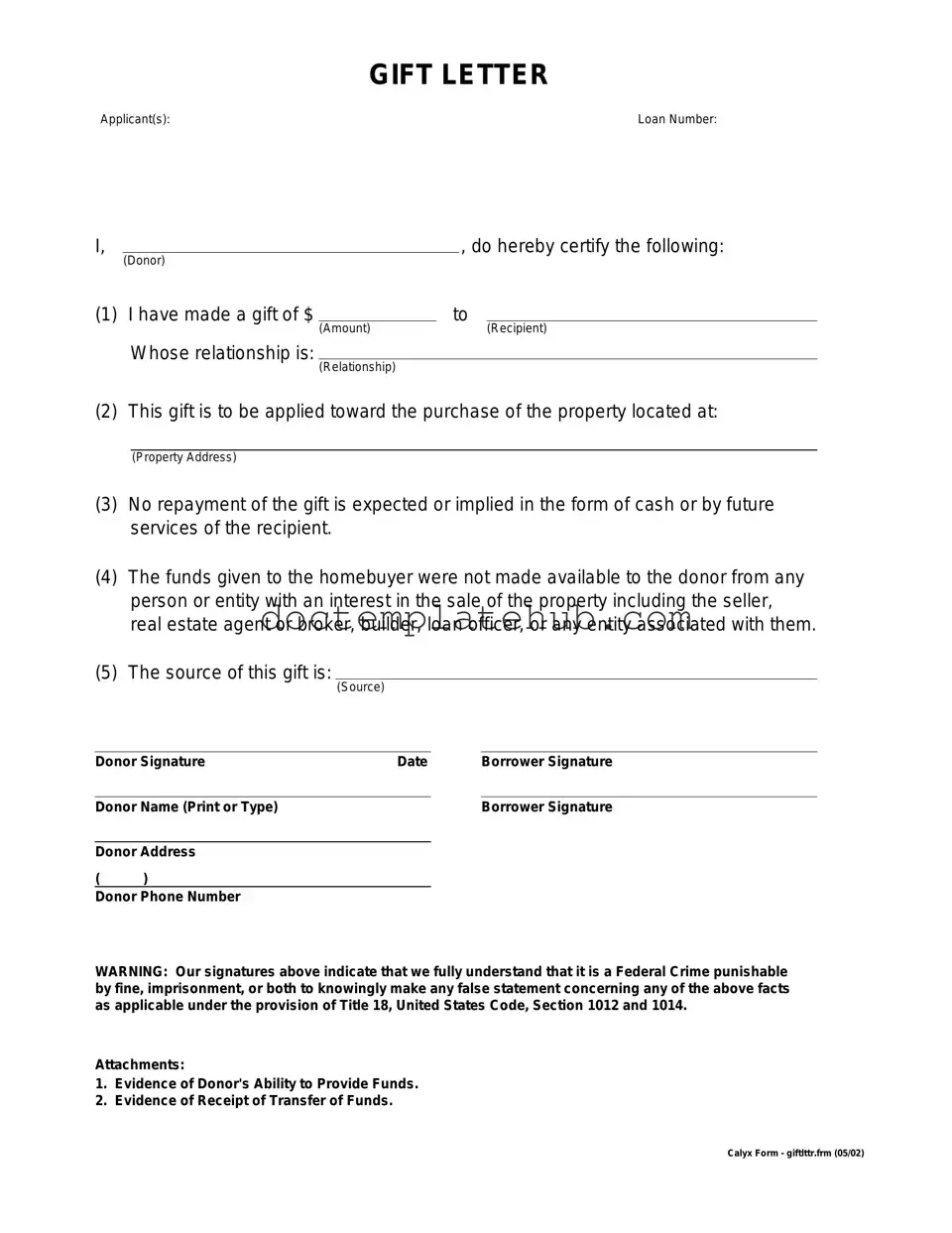What is a Gift Letter?
A Gift Letter is a document that outlines the details of a financial gift given to a borrower. It typically includes the donor's name, the recipient's name, the amount of the gift, and a statement confirming that the funds do not need to be repaid. This letter is often required by lenders when a borrower is using gifted funds for a down payment on a home.
Why do I need a Gift Letter?
Lenders require a Gift Letter to ensure that the funds being used for a down payment are indeed a gift and not a loan. This helps the lender assess the borrower's financial situation accurately. The letter provides clarity and documentation that the borrower will not have to repay the gifted amount, which can affect loan approval.
Who can provide a Gift Letter?
A Gift Letter can be provided by anyone who is giving a financial gift to the borrower. Common donors include family members, friends, or other individuals who have a close relationship with the borrower. Some lenders may have specific requirements regarding who can be a donor, so it is advisable to check with the lender beforehand.
What information should be included in a Gift Letter?
A Gift Letter should include the following information: the donor's name and contact information, the recipient's name, the amount of the gift, the relationship between the donor and recipient, and a statement confirming that the funds are a gift and do not need to be repaid. It may also include the date of the gift and the donor's signature.
Is there a specific format for a Gift Letter?
While there is no universally required format for a Gift Letter, it should be clear and concise. Many lenders provide a template or specific guidelines to follow. It is important to ensure that all required information is included and that the letter is signed by the donor.
Do I need to provide proof of the gift?
In addition to the Gift Letter, some lenders may require proof of the transfer of funds. This could include bank statements or wire transfer receipts. It is essential to check with the lender for their specific documentation requirements regarding gifted funds.
Can I use a Gift Letter for all types of loans?
Gift Letters are commonly used for mortgage loans, particularly for first-time homebuyers. However, not all lenders or loan types may accept Gift Letters. It is important to confirm with the lender whether they accept Gift Letters for the specific loan type being applied for.
What happens if the Gift Letter is not provided?
If a Gift Letter is not provided when required, it may delay the loan approval process or result in denial of the loan application. Lenders need this documentation to verify the source of funds and ensure compliance with their lending policies.
Can I use a Gift Letter for a down payment on an investment property?
Using a Gift Letter for a down payment on an investment property may be more complicated than for a primary residence. Some lenders may not allow gifted funds for investment properties, while others may have specific guidelines. It is crucial to consult with the lender to understand their policies regarding gifted funds for investment properties.
